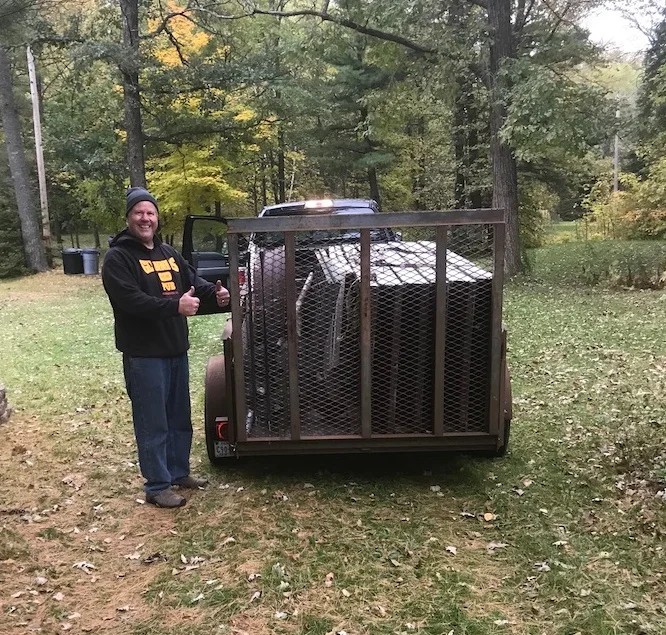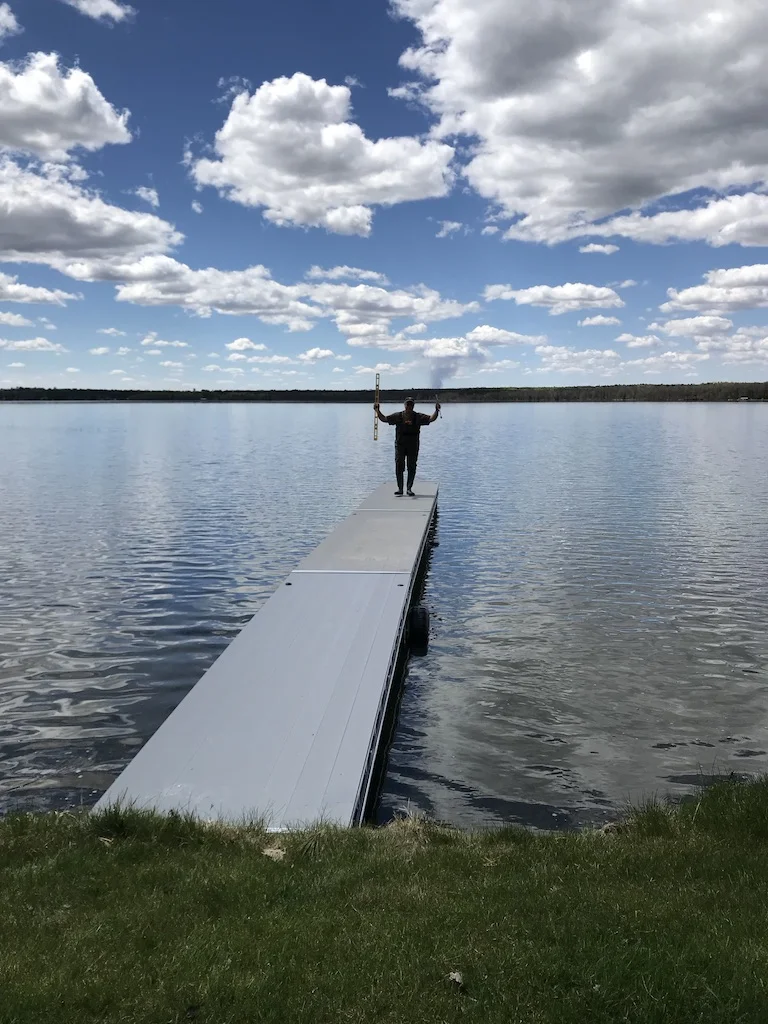Dock Envy
The original wooden dock from the 1950s.
It never seemed that bad when I was a kid. On a really hot day, you had to be careful to not singe your feet on it’s waffley metal surface, but if your feet were wet from the lake, all you felt was summery warmth. Unlike Cousin Jeannie, I was never asked to paint it. And unlike anyone over the age of 15, I was never asked to move that beast of a dock.
The steel dock in the 1970s.
But my carefree thoughts of the dock came to a swift end that first spring when Dave and I put the dock in the lake. There was a lot of grunting, a lot of “ready? 1-2-3 lift!” and no small of amount of cursing. At 48 feet long, it was comprised of 6 spans of steel, each 8 feet long. Each section attached to the next by sliding slim pieces of steel into a rigid slot. Each section was supported by steel posts that were unreasonably long, forcing the installers to hoist a section three feet in the air—without unslotting said section—in order to get the post into place. Each post held up its end of the dock with a single bolt that probably lacked the load-bearing capacity being asked of it.
The dock had been at the lake since at least the 1960s. I’m sure at the time it was state of the art: sturdy, durable, and guaranteed not to inflict wooden splinters on its users. Aluminum was yet to become the metal of choice for docks, so steel was the best a family could get. Because the posts were difficult to adjust, the dock was always precariously uneven, giving it a homely sadness that I couldn’t convert to shabby vintage chic, either in pictures or in my mind. Not even the old tires, hung across the posts as boat bumpers, couldn’t evoke a sense of whimsy for simpler times.
Every spring when we put it in, we would jointly curse the dock for its bad design, forlorn components, and cruel weight. Every time we visited a friend’s lake place, we would gaze jealously at their elegant pier. Every fall, we’d swear this was the last year we were going to deal with such a beast. And every winter, Dave would scan websites of dock manufacturers.
But there were so many other priorities. The cabin needed a new well, roof, windows, siding, kitchen, floors, doors, and paint on any surface that wasn’t wood. Our five-year plan took six or seven years, depending on how you want to count. And never mind the non-cabin expenses in our lives, like college tuition for two and a wedding for one.
So last fall, as we started huffing the sections out for the ninth time, Dave looked back at the trailer parked in the yard and said, “Screw it. Let’s load these sections into trailer.”
Best Dock Removal Day Ever!
I stared at him, hoping he was not just teasing me.
“Yes. It’s time.” Not that I was intending to debate the issue with him, but he had made up his mind—I would not be getting a vote on this one.
A future without this dock gave us new vigor. We loaded the six sections and the 12 posts onto the trailer, along with a few other metal objects that we could fit in. We locked the cabin up and drove to the nearest salvage yard. They weighed the trailer, then sent us over to the yard to have the pieces extracted from the trailer.
It seems that the good people at Wadena Hide & Fur are unaccustomed to customers cheering as their load is dumped onto the scrap pile. The crew were amused and little worried about us.
…and the Andersons cheered!
Our load was over 1,000 pounds. After subtracting the other items in the trailer, we figure that for nine years, we had been moving at least 150-pound sections of dock. We took our $60 and drove home triumphant.
The new dock, which we bought from TS Dock & Lift in Detroit Lakes, is the same length as the old dock but feels like a wisp of a span. With plastic wheels and aluminum frame and decking, it feels light as a feather. Dave installed it by himself and leveling it was easy.
For everyone else, it’s just a long rectangle planted in the water. But for us, it’s our happy place.




